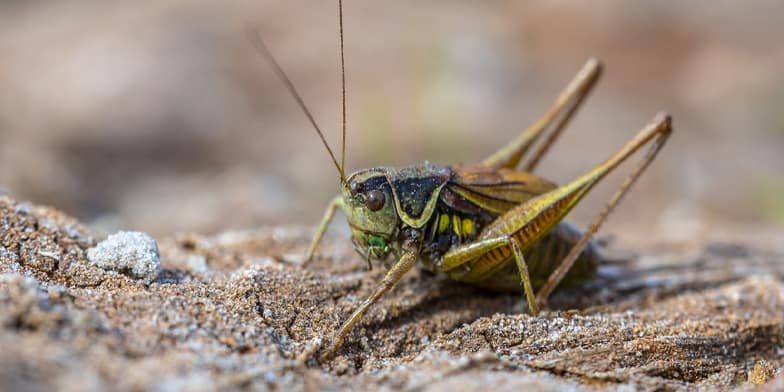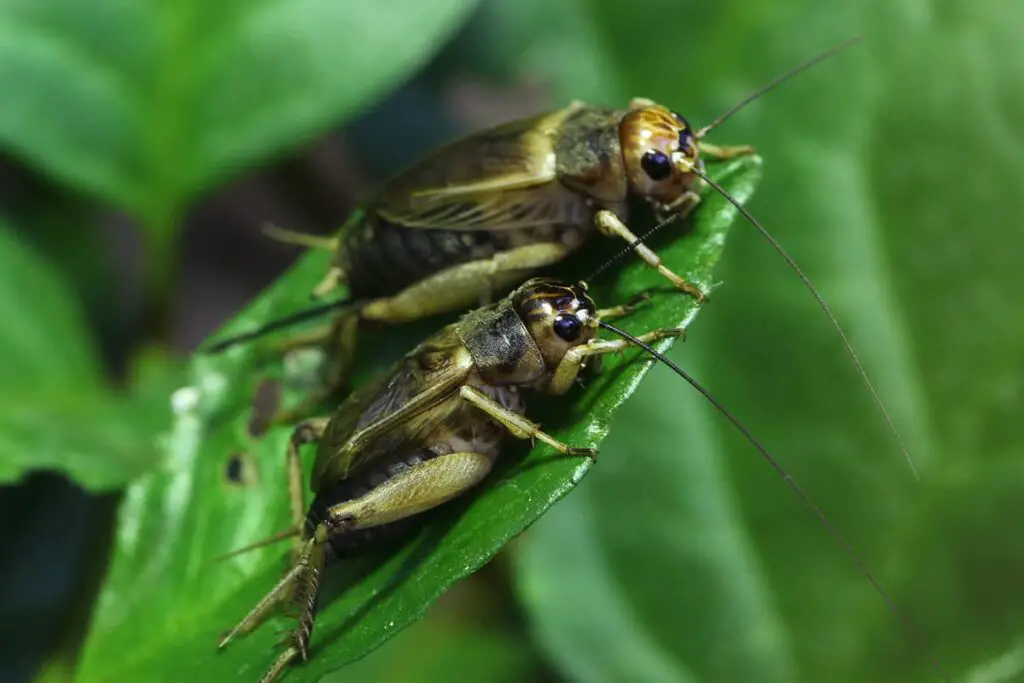
Starting in the cooler nights of summer and reaching into the chilly days of fall, insects begin looking for warmer places to nestle in order to survive the tough months ahead. Among these insects seeking shelter will be a range of cricket species. These nocturnal insects are not only annoyingly noisy, but they also cause damage by chewing on fabric, paper and plant matter in your home.
Being difficult to spot and even harder to catch, you may wonder if just waiting for your unwanted guests to go away (one way or the other) is the best decision – but how long will an errant cricket live in your house?
On average a cricket will live for 90 days, with an adult life span of approximately 6 weeks. Although waiting this period out may be an option if you have a single cricket in your home, you will need to consider preventative treatments if they are reproducing and leaving eggs in the house.
This article will give you insight on locating the cricket(s) in your home, how to get rid of them, and the prevention of future cricket-related incidents.
Locating the Cricket Inside Your Home
Crickets will enter your home to escape threats to their survival and that of their eggs from the environment outside. This is especially common when the seasons are changing, as crickets will seek out a warm place with plenty of food.
When thinking about their primary goal for survival, the obvious place to look for a cricket is the kitchen. This is the place in your house most likely to have a warm place to hide, and clear access to food. They will eat paper or plant matter from vegetables that have been lost behind/underneath appliances. A running appliance also provides a warm sheltered place to stay.
Other areas of the house to consider are the kitchen and bathroom cabinets, in the laundry room near the dryer, or basement pantry and freezer.
How To Get Rid Of Them
When treating for crickets you will need to consider indoor treatments to stop the ones currently in your house, and outdoor treatments to prevent any more from coming inside.
There are natural and safe chemical options for both indoor and outdoor use that you can use yourself without the need for hiring an exterminator.
Indoor Treatments for Crickets
A natural way to attract and trap your house cricket is with a sweet and sticky mixture. Make your homemade trap by mixing some molasses and water in a shallow bowl. Placing the bowl near the suspected location of the cricket will draw them out of their hiding, thinking there is some sugary food for them to indulge in.
You should consider a powder called Diatomaceous Earth. This powder is harmless to your family, and is a naturally formed powder that when placed around the house in cracks, along window sills and baseboards where crickets may be hiding, can slow down and stop the cricket in their tracks. This powder is abrasive to a cricket’s exoskeleton, inflicting damage that causes the cricket to become dehydrated and eventually die.
Indoor treatments can also include store-bought bug spray or glue traps. Bug spray must only be used when people and animals can stay out of the treated room until the product has completely dried. Glue traps are placed in suspected trafficked areas of the cricket – a commercial (and often more effective) alternative to our molasses trap.
Outdoor Treatments for Crickets
While you are treating the inside of your home, you may want to treat the outside areas to prevent any more crickets trying to come in for the season.
Your DIY natural option is a solution of dish soap and water. Mix 2 tablespoons of dish soap to 1 gallon of water for every 2 square feet you will be working with. Place the mixture outside of your windows, attached garages and other potential entry points to your house. This will force the crickets to seek their fortunes elsewhere.
There are also a variety of chemical insecticides available in stores for a stronger effect and treating larger grassy areas. These barrier sprays can last upward of 6 months.
Cricket Prevention
If you’re having issues with crickets inside your home, take extra measures to prevent any further or repeat infestations.
Prevention involves eliminating eggs before they hatch, sealing entry points, insecticides, and other small details like replacing outdoor lighting with a less bug-attractive color such as amber.
Treating For Eggs
Crickets enter our homes looking for a safe place to lay their eggs before age or cold weather end their life. One plus side is that crickets cannot lay as many eggs indoors as they can living outdoors because their resources become much more limited, lowering their reproductive ability.
Egg laying will most likely take place in the same locations the crickets are hiding, nestling in a corner or crevice. It is important to consider all potential entry points and their surrounding areas.
Treat for eggs by cleaning baseboards, window sills, in cupboards, under appliances, and in carpets. Make sure to wipe down and vacuum all these areas. Properly dispose of any rags or wipes along with sealing the vacuum bag and immediately removing it from your house.
Entry Points
Blocking potential entry points will remove the number one threat of outdoor crickets sneaking in your house. You will need to look at foundation cracks in attached garages, broken and cracked seals around doors and windows, and broken screens around windows or vents.
It will be important to treat these areas first with defenses for killing off any existing crickets or their eggs. After you are sure the problem is contained, it’s time to seal up the house.
Use epoxy or latex fillers to seal cracks in concrete between garages and your house or the foundation to your basement. The products and tools to do this can be purchased from your local hardware store.
A similar sealant product will be needed for doors and windows. You can use silicone to reseal cracks or fill gaps. Install new weather stripping to doors and windows to ensure they are properly closing off the outside world when shut.
Open windows that have damaged or no screening are an easy entry to crickets and other unwanted insects. Inspect all of your house’s windows to determine how many screens need to be replaced or repaired. Replacing an entire window screen can be a difficult task if you don’t know how to do it, so you may need to hire someone who can do this for you. Small holes can be closed off with a window screen repair kit.
Insecticide
If your house is located on a grassy property outside the city, crickets may be more of an ongoing concern. In this instance it may be a good idea for you to hire a bug extermination professional to treat the area surrounding your house with insecticides and other treatment methods. Check your local directories for the right assistance to hire.

Amber Lighting
Many insects, including crickets, are attracted to bright lights during the darker hours of the evenings and nights. This naturally brings them closer to our homes, and actually can do these species active harm. If you have a lot of outdoor lighting installed, consider making a switch to yellow-amber lighting. These colored bulbs aren’t as attractive to bugs, and will reduce the chances of crickets coming near your house, while still providing enough light for you to see and move safely after dark.
Wrapping up
A singular cricket will only be able to survive in your home as long as 90 days, likely less. However, if you’re hearing that annoying chirping when you’re trying to sleep you’ll want to consider how that cricket got there, and take measures to prevent any further intruders.
Your first step is to locate where they are choosing to hide. From there you can choose your method of treatment. There are both DIY and natural options, and off-the-shelf chemical solutions.
Protect your house from future incidents by thoroughly cleaning for eggs and repairing any potential entry points. With all possible and correct measures taken into consideration, your home will be cricket (and hopefully noise) free.

Driven by a passion for those tiny creatures that rule our world, we at Bug Domain strive to be your go-to resource for information on insects.



